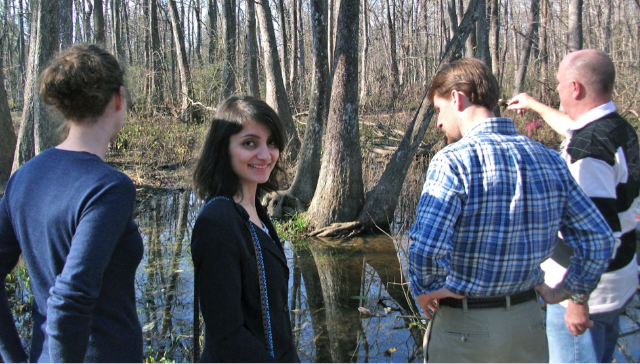Gyeongbukgung Palace
Although most people see Gyeongbukgung the first week in Seoul, we left it for the sixth month, and to be honest, there were no regrets since we saw the palace in excellent weather in the fall, when the leaves had turned crimson and orange. You can book your tour through Klook or Voyagin.
Gyeongbukgung, is the grandest, and also the most touristy of the palaces in Seoul. The Palace was originally built by King Taejo, who was the founder of the Joseon dynasty. This dynasty is the most recent, and also all the palaces in Seoul are from this period. Anyways, Gyeongbokgung served as the principal palace for the Josean dynasty until 1592, when it was burnt down during the Japanese invasions. At that time, the main palace was Changdeokgung (which I have visited and written about earlier).
After the Japanese invasions, Gyeongbukgung lay in ruins for nearly 300 years until the King Heungseon Daewongun, who was regent and father of King Gojong, started to rebuild it in 1865. King Gojong moved in during 1868, but the expensive rebuilding project virtually bankrupted the government.
To get to the Palace, you come through Gwanghwamun station. The entrance has a pair of lion-looking animals. These are mythical creatures called haetae, that are meant to be guardians of Seoul. Then, as you go straight, you will see the main courtyard with the towering ornate two-storey Geunjeongjeon, the main palace building. It is made of wood, with a double-tiered stone platform and surrounding open-sided corridors. This hall was where kings were crowned, met foreign envoys and conducted affairs of state.

Seven of the twelve Josean kings were enthroned in Geunjeongjeon. These include Chogjong, Sejong, Tanjong, Sejo, Seongjong, Chunjong, and Myongjong. It was burned down during the Japanese invasion in 1592 and rebuilt in 1867, during the reign of King Kojong. The throne is centered toward the back of the hall. There used to be ritual objects there, but none now remain.

The building has a high-ceiling, single room structure on a double-level platform. Behind the throne, and in fact throughout the palace, you can see the famous painting of a sun and moon, five peaks, called Irwoldo. The sun and moon symbolize the king and queen while the five peaks denotes a mythical place. The screen serves to display the majesty of the Joseon royal court.

West of Geunjeongjeon is the spectacular Gyeonghoeru, a large raised pavilion resting on 48 stone pillars and overlooking an artificial lake, with two small islands. State banquets were held inside and kings went boating on the pond. It is known to be the largest pavilion in South Korea and was a favored place for the King to entertain visiting dignitaries. King Taejo, founder of the Chosun Dynasty and builder of the Gyeongbok Palace, had the pavilion erected on this man-made lake in the western section of the palace.

Later, King Daejeong, who ruled from 1401 to 1408 ordered his Minister of Manufacturing and Construction (Pak Cha-chong) to enlarge both the lake and the structure. Minister Park built a square with dragon-shaped island supported by a long stone on which to construct the larger pavilion. Forty-eight stone pillars, sculptured with dragons, supported the second floor. Two more islets were made in the lake.


During the Japanese invasion in 1592, the original Gyeonghoeru was burned down leaving only the stone supports. When Gyeongbok palace was rebuilt in 1867, the fourth year of the reign of King Kojong the pavilion was reconstructed. The pillars were replaced with new ones that lack the splendor of the former. But animals were carried on the stone brides and railings. There are such stone structures as the Lotus Pond, Lotus Platform, and dragon-shaped conduits along the lake. This pavilion was used for royal banquets during the Chosun period and is used today for special functions.
A series of smaller meeting halls precede the king’s living quarters Gangyeongjeon, behind which are Gyotaejeon, the queen’s chambers. Behind that is a terraced garden, Amisan; the brick chimneys decorated with longevity symbols on the garden’s top terrace are to release the smoke from the palace's ondol (underfloor heating) system.
One special thing to see is the chimney of Chageyong-jeon (designated Treasure #810) forms a part of the wall of the courtyard. It has ten exhausts on the top of the chimney, which is titled to resemble the beams and rafters of a wooden structure. The chimney is decorated with various designs for long life, wealth, and many offsprings, as well as signs to repel evil. On the lower half of the wall is a large decorative panel, the background of which is plaster. It contains a design of the sun, a mountain, water, clouds, a rock, pine tree, turtle, deer, crane, grapes, the fungus of immortality, bamboo, chrysanthemum, and lotus
On the eastern side of the grounds is Donggun, the living quarters for the Crown Prince. To the rear, King Gojong built more halls for his own personal use and an ornamental pond with Hyangwonjeong, an attractive hexagonal pavilion on an island.
Altogether the palace consisted of 330 buildings and had up to 3000 staff, including 140 eunuchs, all serving the royal family. During Japanese colonial rule, most of the palace was again destroyed – much of what you see today are accurate recent reconstructions.
If you have more time, you can also visit the National Folk Museum which sits in the northern section of the palace. Although we didn't tour it, I have heard that the museum has the best collection of Korean souvenirs.







0 comments